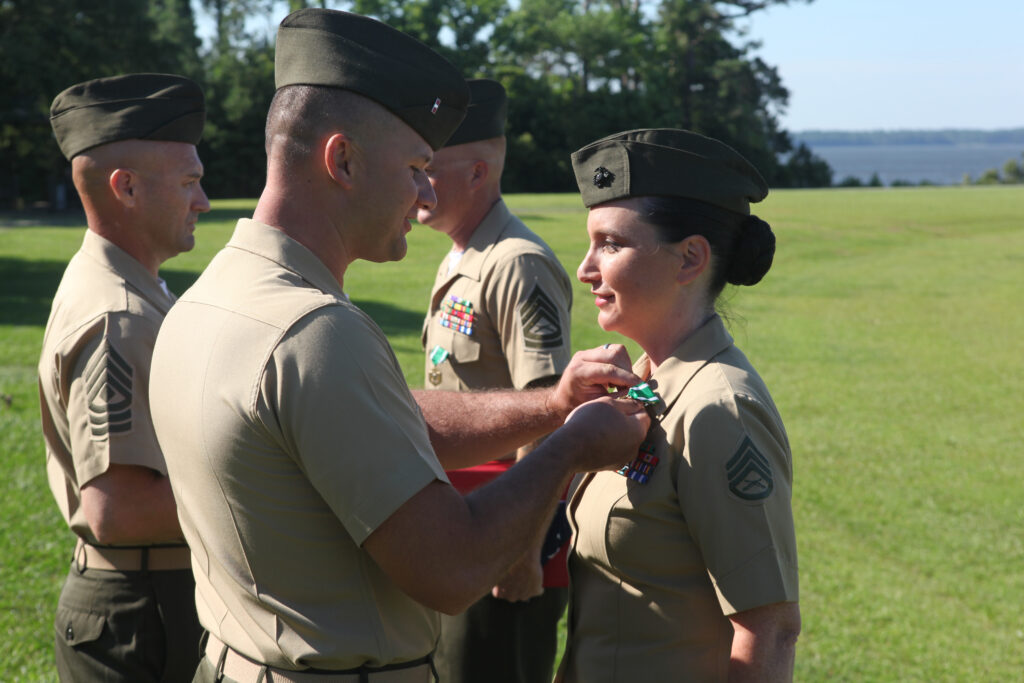
Military Retirement at 38 Years Old? More Common Than You Think.

I vividly remember talking with a 32-year-old sergeant first class my first month in the Army. He was rambling on about retirement and life after the military—there were two thoughts in my head:
- “Wow, you’re old.”
- “I’ll NEVER retire from the Army. That’s so far from now.”
Well, that was 17 years ago, I’m now older than that sergeant first class and I’m 3 years away from retirement in the Army National Guard. It goes by fast.
What’s In It for You?
Retiring at 38-years-old from the military is an aspiration that many servicemen and women share. Achieving this milestone means having dedicated years of your life to the nation’s defense and service, and it often comes with a range of benefits, one of which is a retirement pension.
Let’s talk about living off your military pension when retiring at a young age, planning ahead, the Blended Retirement System and monthly payouts.
Breaking the Stereotype
You probably think (military) retirement looks something like this:

Approximately 20% of military personnel make it to the full 20 year retirement—and most retire after the age of 40. But, if you’re like me and you enlist when you’re 18 (or 17), you may be in luck.
There are a variety of reasons why many service members choose to leave before then—some may leave due to injuries or disabilities sustained while on active duty, others may leave to pursue other career opportunities—but if you stay the course, there are some great benefits in the long run.
Retiring at 38: A Unique Opportunity
Retiring from the military at the age of 38 is a unique opportunity that isn’t available to everyone. It typically requires joining the military at a relatively young age and serving for a minimum of 20 years. While this may involve significant sacrifices and challenges, it opens the door to a pension, healthcare and other benefits that can provide financial stability and security in your post-military life.
After 20 years in an upside scenario, your retirement pension is 50% of your base pay while serving. If you stay in for 30 years, that goes up to 75%.
It’s not a windfall, but it can cover some major expenses like mortgage, car payments, etc. Many people that retire from the military after 20 years begin another career in the civilian workforce. You’re young enough, and you have something most people don’t—at least two sources of income.
Unless you are much better at saving money than most—the average American has $65,100 in personal savings—that pension likely won’t be enough.

Understanding Military Pensions
Military pensions are retirement benefits provided to servicemen and women after they complete at least 20 years of military service. The amount you receive is based on a formula that takes into account your final pay grade, years of service and other factors. This pension is guaranteed for life and is adjusted annually for inflation, making it an attractive financial asset for retirees.
Two Types of Retirement
In 2018, the United States Department of Defense introduced the Blended Retirement System (BRS) as an alternative to the traditional pension system, known as the Legacy Retirement System (commonly referred to as the High-3 System). The BRS combines elements of both traditional pensions and a defined contribution retirement savings account, similar to a 401(k).
Under the BRS, service members who complete 20 years of active service still receive a pension based on their years of service, but it is calculated differently from the Legacy Retirement System. Additionally, the BRS provides government matching contributions to a Thrift Savings Plan (TSP) account, which service members can contribute to throughout their career.
Blended Retirement System (BRS)
Overview: The Blended Retirement System is a retirement plan introduced by the Department of Defense to offer a more flexible and portable retirement benefit to service members. It combines elements of the traditional defined benefit system with a 401(k)-style Thrift Savings Plan (TSP).
Defined Benefit: Under BRS, service members accrue a defined benefit known as the annuity, which provides a pension-like stream of income upon retirement. The size of the annuity is determined by a formula based on years of service, a multiplier and the average of the service member’s highest 36 months of basic pay.
Thrift Savings Plan (TSP): BRS includes an automatic government contribution of 1% of the service member’s basic pay to their TSP account, and they are also eligible for a matching contribution of up to 5% if they contribute their own funds. This creates a retirement nest egg that can be invested and grown over time.
Vesting and Portability: The TSP component of BRS is fully vested from day one, and service members can take it with them if they separate from the military. This portability makes BRS attractive to those who may not make a career out of the military.
Legacy Retirement System (High-3)
Overview: The Legacy Retirement System, also known as the High-3 system, is a traditional defined benefit pension plan that has been in place for many decades. It offers retirement benefits based on a service member’s highest 36 months of basic pay and years of service.
Defined Benefit: Under the Legacy Retirement System, service members receive a pension calculated as 2.5% of their highest 36 months of basic pay for each year of service. This means that after 20 years of service, they are eligible for 50% of their basic pay as a pension.
TSP: The Legacy Retirement System does not include a TSP or 401(k)-style savings plan. It relies solely on the defined benefit pension.
Comparison
Pension Component: BRS offers a smaller defined benefit compared to the Legacy Retirement System. The pension in BRS is calculated as 2% of the highest 36 months of basic pay for each year of service. However, the addition of the TSP component can make up for this difference in many cases.
TSP: The introduction of the TSP in BRS provides service members with an opportunity to save and invest for their retirement, something that was absent in the Legacy Retirement System.
Vesting and Portability: BRS is more flexible in terms of vesting and portability, making it a better option for those who might not serve a full 20-year career in the military. The TSP component is fully vested from the start, and the contributions can be taken after separation.
Choice: Service members who entered the military before 2018 were given a choice between staying with the Legacy Retirement System or opting into the Blended Retirement System. This choice allowed service members to select the retirement system that best suits their individual circumstances.
Benefits of Retiring Early with the Blended Retirement System
Flexible Retirement Options: The BRS allows for more flexibility in retirement planning, making it easier for service members to retire early and still have access to retirement benefits.
Enhanced Financial Literacy: The BRS encourages service members to become more financially literate, as it requires active participation in planning for retirement.
Challenges to Overcome
Reduced Pension: The BRS may result in a lower pension compared to the Legacy Retirement System, which could impact the feasibility of retiring at 38.
Investment Risks: With the BRS, service members bear the investment risks associated with their TSP accounts, which could affect their retirement savings.

Sample Monthly Payouts
To better understand the financial aspect, let’s consider an example of a retired military member at age 38 who has served for 20 years under BRS:
Final Pay Grade: E-7 (Sergeant First Class)
Years of Service: 20
Estimated Monthly Pension under the BRS: Approximately $2,000 to $2,500 (depending on factors such as the year’s Cost of Living Adjustment – COLA)
Now this is a simplified example, and actual pension amounts can vary based on multiple factors such as pay grade, years of service, COLA adjustments and the choice of benefits. The TSP account’s value will also vary depending on how much the service member contributed and the investment performance.
Ready to Retire?
Probably not yet. Hopefully, you’re just getting started on your journey or know someone that is. However, it goes by much faster than you think.
If you retire at 38-years-old, there’s a lot of life left and so many opportunities to continue your journey with purpose and determination. The skills and experiences gained during service become valuable assets in the civilian world. However, the transition from military service to retirement can be a profound change, much like the shift from civilian life to the rigors of basic training.
Both stages represent pivotal moments in a military career, each with unique challenges and adjustments. The shared experiences of sacrifice, discipline and resilience create a bridge that connects these two phases. As you embark on this next chapter of your life, have these conversations early and often—talk about finances, career opportunities and everything the military has to offer. Whether you’re headed off to Basic Training yourself, or sending someone off to Basic Training, remember how impactful support and education can be in the early days of service.


